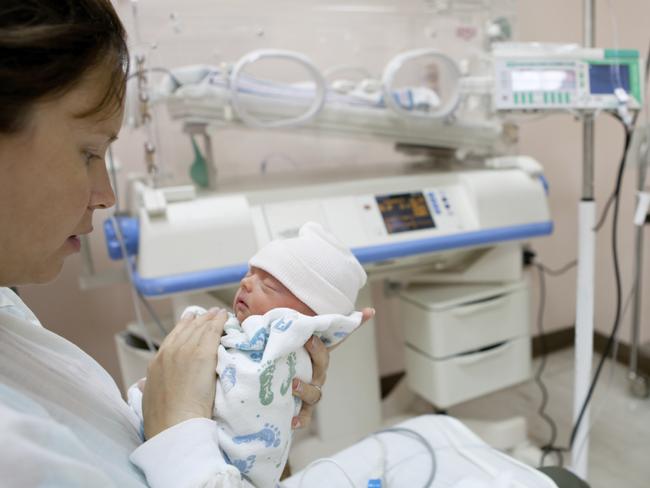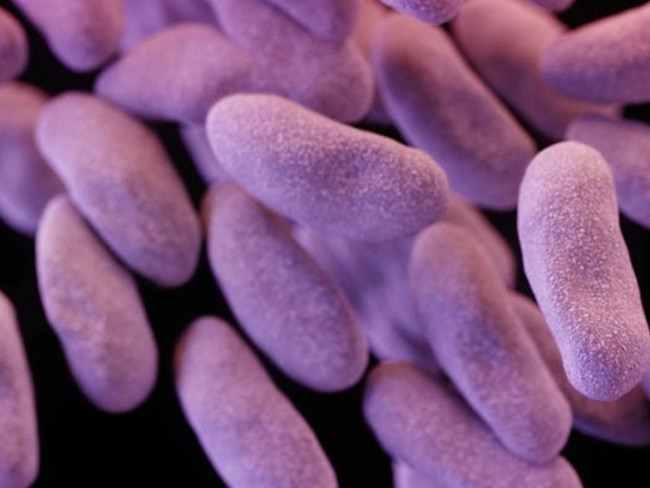Six newborns infected as deadly ‘superbug’ strikes Sydney neonatal unit
ONE of the newest and most deadly superbugs that is resistant to all antibiotics hit a Sydney neonatal unit earlier this year, infecting six babies.
NSW
Don't miss out on the headlines from NSW. Followed categories will be added to My News.
ONE of the newest and most deadly superbugs that is resistant to almost all antibiotics hit a Sydney neonatal unit earlier this year, infecting six babies.
Luckily there were no deaths, NSW Health has confirmed.
The January outbreak was possibly caused by a mother who had travelled overseas and brought it back.
The superbug is called Carbapenemase Producing Enterobacteriaceae (CPE) but is also known as Carbapenem Resistant Enterobacteriaceae (CRE).

MORE FROM JANE HANSEN
NEW CERVICAL CANCER SCREENING REGISTER PUTTING LIVES AT RISK
THE DOCTOR FUNDING HIS OWN MEDICAL RESEARCH TO SAVE DAUGHTER
It gets its name because it is resistant to carbapenems, which are the most powerful antibiotics and are considered the last line of defence.
Senior medical adviser to the Antimicrobial Use and Resistance in Australia Surveillance System (AURA) Professor John Turnidge said the superbug is being imported by travellers and those having surgery in South-East Asia.
“We know when people have a history (it’s because) someone has been to India, had a medical procedure in India, someone has visited from India (although) not just India, it’s South Asia, Pakistan and Bangladesh as well,” Dr Turnidge said.

“The resistance can be carried around and we are all picking up new strains so presumably someone was carrying that resistance and it ended up in a very vulnerable group, and they also have immature immune systems that leave them very vulnerable.
“It’s a super-resistant bacteria related to e-cold, which are the commonest cause of septicaemia or blood poisoning so when we see resistance to our last-line antibiotics, the carbapenems, we get very concerned,” he said.
“A new variety appeared in India and was spotted all around the world and that has been seen in Australia.
“These are the kinds of resistances we can’t afford to get established and spread.
“You’re average person in the street is not at risk but, if the resistance spreads, and it can spread in two ways — the bug itself or the resistance genes can spread — then it might end up in common bugs that cause urinary infections, in which case we are going to be in trouble.”

The National Alert System for Critical Antimicrobial Resistances established by the Australian Commission on Safety and Quality in Health Care, found there were 71 cases of CPE detected in NSW hospitals in the October 17-March 18 quarter, the most of any state.
Nationally there were 241 in the same period.
NSW Health confirmed there were no deaths from the outbreak in the neonatal unit.
The first documented outbreak of CPE in Australia was in St Vincent’s Hospital Melbourne in 2012 where 10 cases were identified.
The outbreak had a mortality rate of 40 per cent.
Clinical Adviser to the NSW Clinical Excellence Commissions Dr Kate Clezy said new guidelines due for release in late 2018 “will help NSW hospitals further improve how they
identify cases of CPE”.
The only drug that can treat CPE is an old antibiotic called colistin, which is highly toxic and can damage kidneys and the nervous system.
